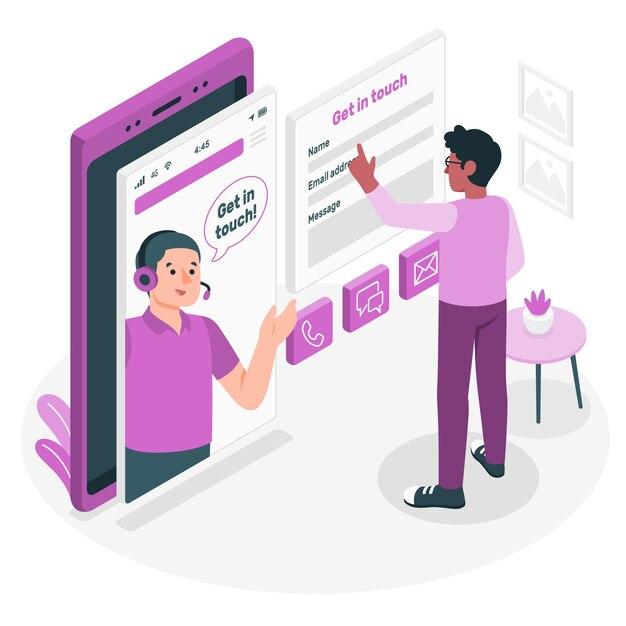In an era dominated by rapid digital transformation and the convenience of instant messaging, one form of communication continues to stand unrivaled, embodying an age-old adage: “The sound of your voice carries weight that text never will.” Enter the timeless power of phone calls – a communication medium that transcends the limitations of text, offering a symphony of benefits for personal and professional interactions. The allure of the phone call lies in its ability to bridge the gap between sender and receiver, forging a genuine connection that text alone struggles to achieve.
For businesses, the strategic deployment of phone calls is a transformative tool, fostering relationships and driving success. The live, real-time nature of voice communication opens doors to unparalleled advantages, delivering crystal-clear context that dissolves misinterpretations. Customers are not merely recipients of service; they become valued partners in a conversation, laying the foundation for trust and credibility. In a landscape driven by authenticity, businesses leveraging phone calls enjoy heightened customer satisfaction, as interactions become opportunities to address concerns, answer questions, and surpass expectations.
In the realm of efficient customer service, where calls are juggled like prized gems, a multifaceted approach is imperative. Businesses find themselves equipped to redress missed calls promptly, elevating customer experiences to paramount importance. Such services are no longer optional, but essential for companies. Because, with a vested interest in amplifying sales, nurturing profits, and nurturing enduring customer relationships, call tracking is now an absolute.

Enter the world of call tracking – an indispensable tool that unlocks a wealth of data and demographic analysis from phone conversations. Widely embraced by callers, marketers, and business leaders, this software seamlessly integrates with recipient interactions, ushering in a new era of precision and tailor-made solutions.
At its core, call tracking empowers businesses to focus their efforts with laser-like precision. It’s the compass guiding campaigns, strategies, and customer experiences. Its strategic utility begins with unraveling the paths that lead callers to your doorstep.
The mastery of call tracking reaches its pinnacle by attributing callers to specific marketing channels. In a world inundated with options, this software hones in on the vital data points, ensuring that every interaction is informed by a nuanced understanding of its origin. This pinpoint accuracy elevates decision-making, leading to potentially lucrative outcomes.
Moreover, call tracking is not content with just the surface conversation. It boasts the ability to capture the essence of each interaction through audio recordings. This auditory dimension not only guards against misinterpretation but also unveils a clear source of every call.
Furthermore, call tracking is not confined to data alone. It is a symphony of both audio and data, coalescing into a succinct call summary. This encapsulation of the conversation distills its essence, offering a streamlined perspective without compromising on depth.
There are 3 essential types of call tracking.
Campaign-level call tracking is a sophisticated method that connects incoming phone calls to specific marketing campaigns. It provides a holistic view of how different marketing efforts impact customer interactions over the phone. This technique goes beyond standard call tracking by pinpointing which campaigns drive the most calls and contribute to business goals.
When a potential customer calls, campaign-level call tracking captures data like the call source, the specific advertisement that caught their attention, and relevant keywords. This data helps businesses identify which campaigns resonate with their audience. By analyzing this information, businesses can allocate resources more effectively, fine-tune their strategies, and optimize marketing efforts for better returns.
In essence, campaign-level call tracking acts as an investigator for each marketing initiative, untangling the threads of customer engagement. It enables businesses to tailor campaigns for maximum impact, ensuring every call becomes a stepping stone toward achieving their objectives.
Session-level call tracking is another advanced strategy employed by businesses to gain comprehensive insights into customer interactions. Unlike traditional call tracking, it encompasses the entire customer journey before, during, and after a phone call.
Imagine session-level call tracking as a backstage pass that captures the full scope of a customer’s experience. It records their online actions – the pages visited and products explored – before they even make the call. When the call happens, this approach seamlessly links their online journey with the conversation, offering valuable context.
This method empowers businesses to pinpoint the precise touchpoints that trigger phone calls, optimize processes, and personalize interactions. It also facilitates more informed follow-ups by referencing the customer’s online engagement before and after the call, ensuring each conversation becomes a chapter in a customized narrative.
Visitor-level call tracking is probably the most efficient method used for call tracking. It is an advanced approach that provides detailed insights into the online behaviors of individual website visitors who later make phone calls to a business.
It records their journey through the website, tracking the pages they visit, products they engage with, and content they interact with. When a visitor makes a phone call, this method seamlessly connects their online actions to the call, offering a comprehensive view of their decision-making process.

For any business, advertising is an essential aspect. The basic aim is to gain popularity, get more customers, and persuade callers and website visitors to avail their service or buy their product.
In this respect, companies, marketing agencies, and businesses encounter several challenges that can be effectively addressed by implementing call-tracking solutions:
Businesses have to grapple with the difficulty of accurately attributing phone call conversions to specific marketing efforts. This ambiguity hampers their ability to measure the true impact of campaigns and allocate resources effectively. Call tracking acts as a beacon of clarity, offering a detailed trail that leads to each call. With unique phone numbers assigned to different campaigns or channels, agencies can precisely attribute calls to their origins. This empowers agencies to attribute conversions and revenue accurately, providing an accurate picture of the success of each marketing strategy.
Without call tracking, you might miss out on vital insights into caller behavior. These insights, such as call duration, location, and caller demographics, provide a goldmine of data for optimizing campaigns. Call tracking not only captures this data but transforms it into actionable insights. You can understand which campaigns or channels resonate most with your target audience, helping you refine strategies and tailor messaging for maximum impact.
A common challenge faced by businesses is deciding where to allocate their resources. Without call tracking, a business cannot differentiate between high-performing and underperforming campaigns. Call tracking fills this gap by offering a clear view of which campaigns generate the most calls and conversions. Armed with this knowledge, you can reallocate budgets and efforts towards strategies that deliver measurable results, ultimately maximizing your ROI.
The effectiveness of marketing campaigns in driving phone call conversions can be elusive without call tracking. Businesses may struggle to identify the campaigns or touchpoints that lead to the desired actions. Call tracking transforms this challenge into an opportunity. By dissecting call data, they can gain insights into caller intent, allowing them to refine campaign elements, landing pages, and keywords to optimize conversion rates and improve overall campaign performance.
Delivering comprehensive and accurate reports to clients is crucial for building trust and demonstrating the value of marketing efforts. Traditional reporting methods may lack the granularity needed to showcase the impact of phone call conversions. Call tracking equips agencies with the tools to generate detailed reports showcasing call volumes, sources, and outcomes. This data-rich reporting strengthens the agency-client relationship, highlighting the agency’s expertise and contribution to the client’s business growth.
In essence, call tracking serves as a strategic ally for any business, helping them overcome common challenges and enabling them to provide data-backed solutions that drive results for their clients or customers. By embracing call tracking, a business can unlock a wealth of insights, enhance its campaigns, and build stronger client relationships.
Call-tracking solutions offer a range of features designed to enhance businesses’ ability to track, analyze, and optimize their phone call interactions. Some key features include:
These features offer a robust foundation for businesses to track, analyze, and optimize their phone call interactions, leading to more effective marketing strategies and improved customer engagement.

Setting up call tracking for your business is easy thanks to the multitude of options available in the market. Options like CallRail, Invoca, CallSource, Phonexa, and our very own LimeCall make it very accessible for any kind of business to start call tracking and get the metrics and data that they need. But as for any business decision, it’s important to do the due diligence. To help, here is a step-by-step plan to help you find the right option for your business.
In today’s digital landscape, call tracking emerges as a pivotal tool for businesses, bridging the gap between online engagement and offline conversations. It empowers businesses to decipher customer behavior, optimize campaigns, and personalize interactions.
Call tracking’s power lies in attributing phone call conversions to specific campaigns and sources, enabling efficient resource allocation and precise campaign optimization. Moreover, it enhances customer experiences through insights from call recordings and demographics.
In an evolving tech-driven world, call tracking is essential for businesses seeking to forge meaningful connections, boost ROI, and navigate a future brimming with opportunities.
, July 15, 2023, LimeCall Team

Top rated callback automation platform that connects your website visitors to your team within 20 seconds through phone callback and whatsapp driving upto 40% more conversions.
Learn more